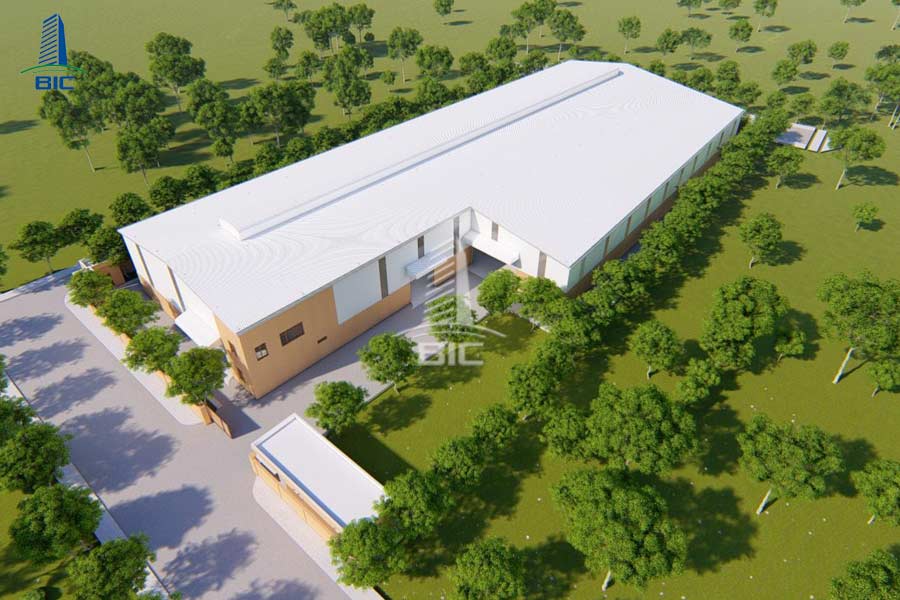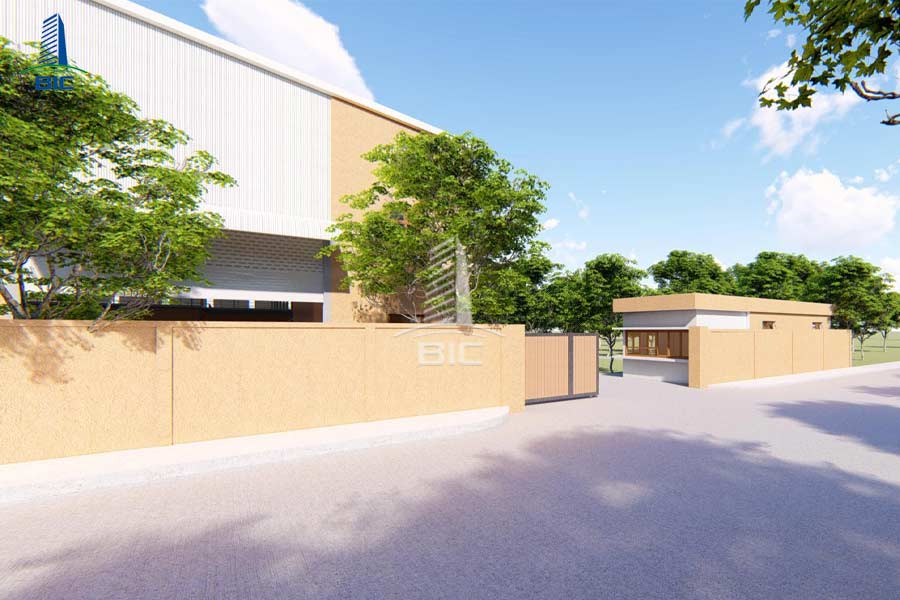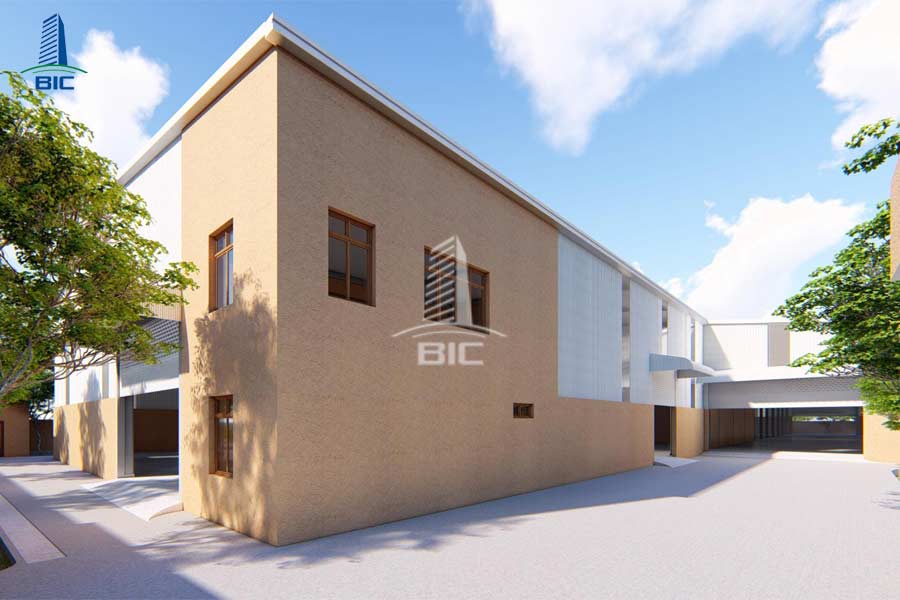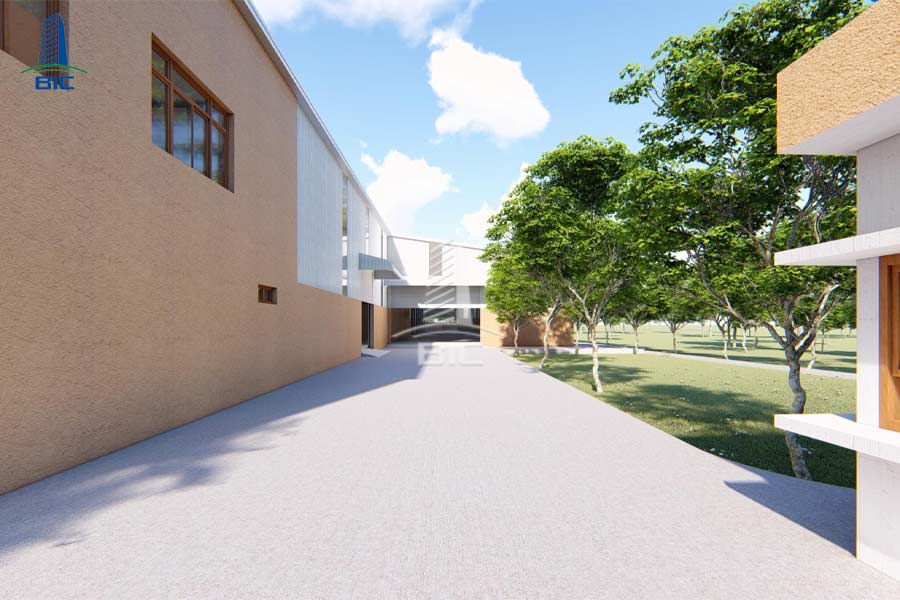
Factory design is the first step that determines the investment efficiency and long-term operations of a business. A good design helps optimize space usage, ensure smooth production processes, and save construction costs. On the contrary, even a small mistake in the design stage can lead to serious consequences such as costly renovations, reduced productivity, or potential safety risks.
In reality, many businesses often make repeated mistakes when building industrial factories, mainly due to inadequate site surveys, poorly organized layouts, or failure to plan for future expansion. These mistakes not only delay project progress but also directly impact the development of the entire production system.
To help businesses be more proactive in their investment journey, this article by BIC analyzes 5 common mistakes in industrial factory design and provides solutions to ensure projects achieve optimal and sustainable efficiency.
During construction, factory design is the foundation that determines the quality, lifespan, and operational capability of the entire facility. If mistakes occur at the design stage, later problems will be difficult to fix and may result in significant financial losses. Avoiding design errors not only saves investment costs but also ensures long-term safety and efficiency.
Mistakes in design often lead to miscalculations of material quantities, usable floor area, or structural systems. During construction, these errors force investors to make adjustments, generating unforeseen costs. In many cases, corrective costs may account for 20–30% of the total investment far exceeding the supposed “savings” from skipping detailed design at the start.

Factories operate continuous large-scale production lines. If the layout is unscientific, the movement of raw materials and finished goods will be disrupted, wasting both time and labor. A common mistake is failing to account for future expansion. When production demand rises, renovations or new construction interrupt operations and cause major losses.
Poor design in space, lighting, or ventilation directly affects the work environment. Workers forced to work in hot, dark, or poorly ventilated conditions experience reduced productivity and higher error rates. In contrast, a scientifically designed factory not only improves efficiency but also enhances worker health and morale.
Design errors can create serious safety hazards. For example, inadequate spacing between production areas, missing emergency exits, or improperly arranged fire protection systems can become life-threatening risks during accidents. Many businesses have been forced to halt operations or pay heavy penalties for non-compliance with safety standards.

A poorly designed factory undermines not only production efficiency but also the company’s credibility with partners and customers. Conversely, a modern, functional, and compliant factory becomes a competitive advantage, reinforcing the company’s professional image and sustainable vision.
In practice, businesses often make seemingly minor mistakes that lead to significant costs, delays, and operational inefficiencies. Below are 5 common mistakes and suggested solutions.
A frequent mistake is neglecting geological and site condition surveys. Many investors rely only on land size without analyzing soil properties, load-bearing capacity, sunlight, wind direction, or infrastructure connections.
Consequences: Weak soil can cause settlement or cracked foundations, endangering the facility. Poor building orientation increases cooling and lighting costs and shortens building lifespan.
Solution: Conduct thorough geological surveys, measure site conditions, and analyze climatic factors. This data is critical for selecting foundation, structural, and orientation solutions.

Some designs fail to properly connect production areas, storage zones, and offices. As a result, production lines become fragmented, and transport distances increase.
Consequences: Longer movement paths waste time, increase labor costs, and lower efficiency. Poor layout also makes management and quality control more difficult.
Solution: Layout must reflect the production line characteristics of each industry. Raw materials should be near production areas, finished goods close to shipping docks. Movement paths must be short, direct, and free of cross-intersections.
Many businesses focus only on current needs, ignoring growth potential in the next 3–5 years. When expansion is required, factories lack space or infrastructure capacity, forcing costly renovations or relocation.
Consequences: Renovations are costly and interrupt production. In some cases, relocation to a new site is necessary, leading to severe time and financial losses.
Solution: Incorporate expansion options into the initial design. Leave space for future production lines, warehouses, or flexible structural upgrades (additional floors, extended areas).

Some designs focus only on production space while neglecting environmental treatment, ventilation, and fire protection often due to cost-saving motives.
Consequences: Non-compliance with regulations makes it hard to obtain approval and risks fines during operations. Worse, fire or explosion incidents can cause immeasurable damage to assets and human lives.
Solution: Integrate environmental and safety systems from the design stage. Include fire exits, firefighting systems, water storage, and waste treatment solutions. These are not only legal requirements but also corporate responsibilities toward employees and the community.
Some businesses choose contractors solely based on low price, ignoring expertise and proven experience.
Consequences: Poorly detailed drawings and impractical designs cause continuous revisions during construction, raising costs far beyond initial budgets.
Solution: Evaluate contractors based on credentials, past projects, and client feedback. A reputable partner not only provides accurate drawings but also offers expert advice and optimized solutions.

Industrial factory design is a complex process requiring technical expertise, legal compliance, and practical production knowledge. To minimize risks and optimize investment efficiency, businesses should follow these recommendations:
Define project goals, scale, functions, and budget. A comprehensive plan prevents frequent design changes that cause delays and cost overruns.
Survey soil, infrastructure, power, water, and climate conditions. Analyze production specifics, technology lines, and 5–10 year growth plans to create a future-ready design.
A compliant factory ensures efficient operations, worker safety, and environmental responsibility. Fire protection, waste treatment, and ventilation systems must be integrated from the design stage.
Frequent communication between investors, architects, and engineers ensures the design meets real needs. Investors should provide clear requirements, while designers propose optimized technical solutions.
A reliable partner with proven projects ensures practical and efficient designs, whether pre-engineered steel factories or multi-story reinforced concrete facilities.
Industrial factory design is a strategic decision that directly impacts investment costs, productivity, and long-term business growth. Avoiding common mistakes such as inadequate surveys, poor layout planning, or neglecting safety helps businesses achieve efficient, sustainable facilities.
Choosing a reputable, experienced design partner is the key to building a safe, modern, and future-ready factory. Contact BIC today for professional consultation and the most suitable industrial factory design solutions for your business.